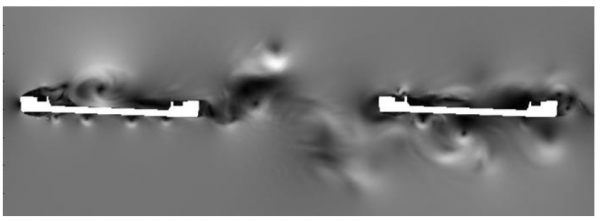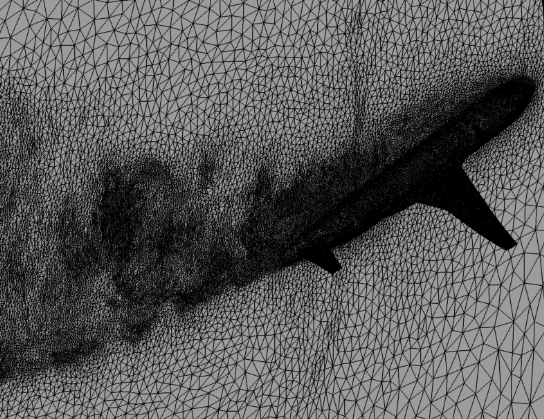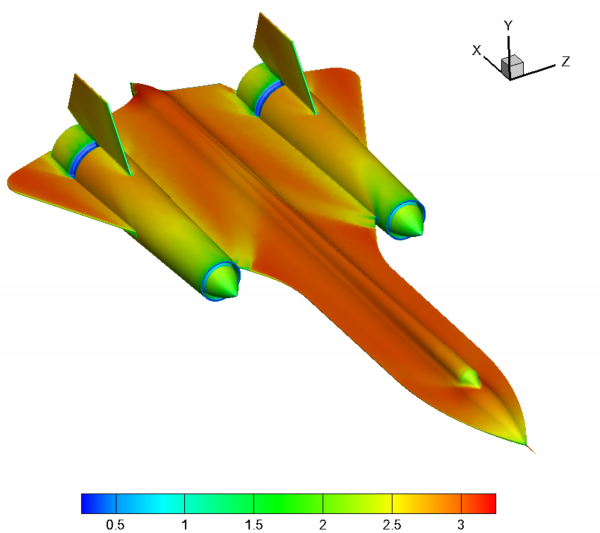Aerodynamics
Aerodynamics is particular study field of fluid dynamics, where the fluid is the air and its motion affected by solid objects is investigated. Numerical models can be used to simulate such problems for different flow and geometry conditions. The relation of air flow speed to the sound speed is called Mach number (M), which is also related to compressibility effects, while the chaotic and random changes in the flow field are related to the Reynolds number (Re). Small Reynolds number flows are often called laminar while high Reynolds number flows are referred as turbulent. When the Mach number is very small (M < 0.3), the air flow behaves as almost incompressible. The flow around buildings and bridges are typical examples.

Figure 1: Flow over two paralled bridge decks [Animation].
For M < 0.8, the flow can be classified as subsonic, where small compressibility effects take place. The transonic regime is between 0.8 < M < 1.2 where middle compressible effects are present on the flow. The flow around a commercial aircraft or its wings are typical examples.

Figure 2: Transonic flow past an aircraft [Animation].
For M > 1.2 the flow is supersonic. Strong compressible effects such as shock waves are predominant on the flow. Supersonic business jets, projectiles and combat aircraft can achieve such speed conditions. For higher speeds (M > 5) the flow is called hypersonic, where chemical reactions, strong heating and ionization effects can occur. An airspace capsule performing an atmosferic re-entry is an example of such situation.

Figure 3: Mach number plotted on the surface of a supersonic aircraft SR-71.

